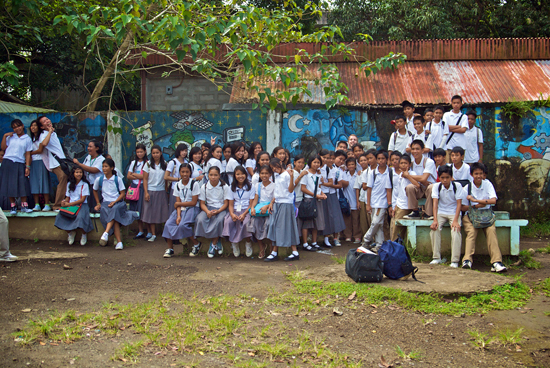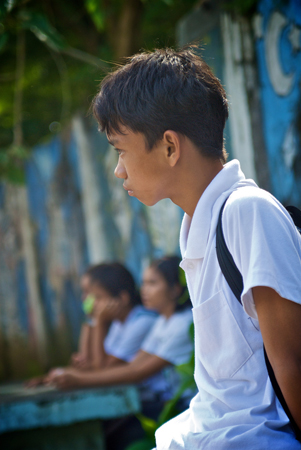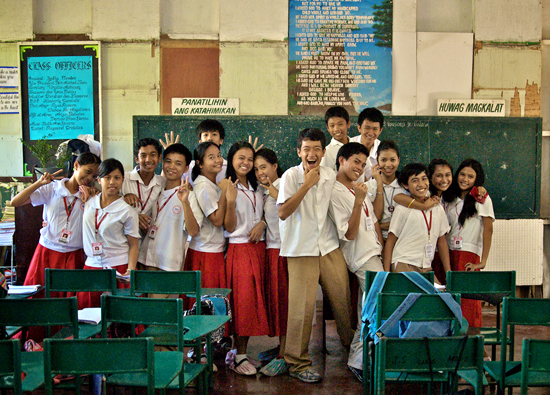Education: Education Structure
Introduction
Education is compulsory in the Philippines from the ages of 7 to 18 years old, covering both elementary and secondary schooling. Homeschooling is permitted provided that the parent-teacher is a college graduate and is able to provide at least four hours of daily instruction. Parents may access lesson plans, teacher-training, and instructional materials through government accredited homeschooling programs.
School uniforms are common in Philippine state schools. For boys, a school uniform typically consists of a white shirt and khaki, black, brown, or navy blue trousers. For girls, the uniform would be a white blouse with a ribbon or necktie and a pleated skirt.
A bilingual policy is in place for the medium of instruction in state schools. Filipino is considered the foundation language and is used for the first few years, with English then becoming commonly used. English usage starts in subjects such as science, technology, and home economics. There are a number of official regional languages that can be used as alternatives in early schooling.
Formal Structure of the School System
Primary
Type of school providing this education: Elementary school (Paaralang elementarya)
Length of program: 6 years
Age: 7 to 13 years
Certificate/diploma awarded: Primary School Leaving Certificate
Secondary
Type of school providing this education: Secondary or high school (Paaralang sekundarya)
Length of program: 4 years
Age: 14 to 18 years
Certificate/diploma awarded: High School Diploma
There are a number of public nursery schools in the Philippines, mostly in urban areas, that accept children from the age of four years. Most children, however, commence formal schooling when they start elementary school.
Elementary school is split into two levels; the first three and final three years are referred to as primary and intermediate levels respectively. A National Achievement Test (NAT), which all primary pupils take, is used as a measure of school competency but not as an indicator of a student academic ability. All pupils pass automatically on to secondary school.
The Philippine secondary school system was introduced in 1946 during the American colonial period and has not altered since that time. It is based on an American high school and consists of four grades pupils move through annually. On completion, students are awarded the High School Diploma, indicating successful completion of compulsory schooling. Higher education institutions, both public and private, administer their own College Entrance Examinations (CEE).
Vocational education is provided in colleges, most of which are private. Short-duration intensive training courses to full two-year diplomas in selected professions are available to Filipino students.
School Timetable
The school year in the Philippines consists of two semesters with a two-month break during April and May, a one-week semester break during the last week of October, and a week or two as a Christmas break. Most schools operate a morning and an afternoon shift.
Semester dates: (One) June to end of October, (Two) November to end of March
School days: Monday to Friday (some schools have Saturday classes)
School hours: 06:00 to 11:30 or 12:30 to 18:00 (two-shift system)
Grading System
Higher education institutions in the Philippines typically grade students using a five-point scale from 1 to 5. On this scale, 1 is considered excellent, 4 is the minimum passing grade, and 5 represents a failing grade. The grading systems used in Philippine secondary schools vary greatly; some use the same numerical scale as is used in colleges and universities, while some use the A to F letter scale where A is excellent, D is the minimum passing grade, and F is failing. Some secondary schools use a percentage scale to grade student performance.
Cost of Schooling
Public schools are free of charge in the Philippines, but families must provide funds for uniforms and writing materials, as well as transport and meal costs. Some schools request small annual fees to cover miscellaneous expenses, such as repairs and maintenance costs.
Special Schools
The Department of Education recognizes all forms of physical and mental impairments that may require special needs schooling. The formal policy is for integrated education, where possible. There are over 1,500 state schools with special education programs in place, including additional teaching resources and dedicated teaching staff. A small number of special needs schools are available in the country, and the vast majority are private.
There are a large number of faith schools in the Philippines. For example, most of the Roman Catholic religious orders have their own schools. They follow the national curriculum, but also cover studies of the Catholic religion. Since the country has a large Muslim population, in 2004 the government introduced the teaching of Arabic Language and Islamic Values for Muslim children in public schools. Some Muslim families prefer to send their children to private madaris, recognized Islamic schools operating a government-authorized Standard Madrassa Curriculum (SMC).
Curriculum
The Filipino elementary school curriculum covers the core subjects of mathematics, sciences, English and Filipino languages, and makabayan (social studies, livelihood education, values). Science becomes a core subject from the third year of study. Other subjects include music, arts, and physical education. In 2007, the government announced that Spanish was to be introduced as a mandatory subject in all Filipino schools starting in 2008; however, implementation of this subject has been delayed.
The secondary curriculum is highly specific, and is compulsory for private schools as well as public. Filipino must be studied at all levels. The first year has additional core subjects of algebra, science, English, and Philippine history. Second year pupils study algebra, biology, English, and Asian history. Third year subjects are geometry, chemistry, world history, and geography. The fourth year consists of calculus, trigonometry, physics, literature, and economics. Minor subjects also studied may include health, music, arts, computer programming, and home economics.
Department of Education
DepEd Complex
Meralco Ave.
Pasig City
Philippines
Tel: [63] 2 632 1361
Web: www.deped.gov.ph
Copyright © 1993—2025 World Trade Press. All rights reserved.

 Philippines
Philippines 


